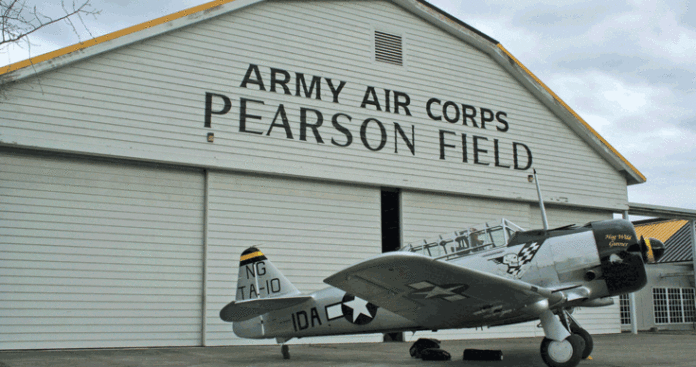Within the aviation industry, it’s a well-known problem: An estimated 21,000 new aerospace workers will be needed in Washington state over the next decade. Couple that fact with an aging industry workforce, and you have the recipe for a major employment problem.
Simply put, “the industry needs bodies,” said Patrick Justice, vice president of Van-Port Design, a Vancouver-based manufacturer of tooling and fixtures for the aviation industry. “It needs people with training and skill.”
In an effort to transform that problem into an opportunity for Southwest Washington, the Fort Vancouver National Trust – more specifically, Pearson Air Museum – and the Clark County Skills Center have teamed up with Leadership Clark County (LCC) to develop a student aviation program.
The brainchild of a LCC Class of 2012 project team, the aviation program aims to increase local visibility and interest in aerospace-related careers through the creation of a ten-week summer program for Clark County Skills Center students. The program kicks off at Pearson on June 25, 2012.
Using the summer program as a guide, organizers hope to eventually turn the Pearson-based course into a full-fledged two-year, STEM-focused Skill Center program that provides students with a type of industry certification.
“Learning about the opportunities within the aviation industry was definitely eye-opening,” said Tina Krause, a LCC project team member. “There’s the physical airplane mechanics, but also the technology piece of it – learning to fly the simulators, to build the simulators. I think the industry itself is a lot bigger than what I realized.”
As chair of the Aviation Subcommittee, and having toured Boeing and Insitu as recently as last week, U.S. Senator Maria Cantwell (D-WA) said the demand for skilled aviation workers is showing no signs of letting up, adding that the aviation industry needs programs like the one that’s being developed at Pearson Air Museum in order to help get young people interested in aviation careers.
“When you think about where you are going to get that workforce [in the next decade], part of that you can re-skill and re-tool people who may already have some background and can continue forward,” explained Cantwell, “but you also have to educate people to be interested in those jobs, which means you have to go into the high school levels and get young people interested in aviation right now.”
Recognizing the growing aerospace job skills gap, a number of aviation-related businesses and associations from around the region have already expressed interest in helping to develop the student program. Regional players such as Bingen-based Insitu and SeaTac-based Alaska Airlines are among the companies that will comprise an aviation program advisory committee. Like all Skills Center advisory committees, these volunteers will help shape curriculum to ensure that students are continually learning up-to-date skills with where the industry is headed – a critical element, according to Justice, especially when it comes to the constant influx of new technology.
“For tooling, KeyCreator is currently the best CAD (computer-aided design) software on the market, but no one in the region teaches it. You have to go to California for that (training) and it makes me sick,” he said. “So yeah, if the program is set up right, we’d be willing to hire people. If (students) knew how to use KeyCreator and they understood some basic stuff, we’d hire people right out of the shoot.”
Andrew Britschgi, program manager for Camas-based PLEXSYS Interface Products Inc., a software modeling and simulation company, said the Pearson aviation program benefits his company in the short-term and the long-term.
“A large part of our business relies on aviation subject matter experts,” said Britschgi. “We’re talking about people that are going to need ten-plus years of experience to really be the experts that we need, but you have to start somewhere.
“Our other big need, since we are a software modeling and simulation company, is in getting software engineers,” he added. “The vast majority [of engineers] that we have now came out of local schools, and it would certainly help our product and business if they also had some kind of background in aviation.”
In addition to the importance of familiarizing students with the latest trends as they relate to the aviation industry, Cantwell said businesses are focusing on the education of young high school students because there is an opportunity to teach them lean manufacturing concepts.
“They (aerospace companies) know that lean manufacturing is such a key component to where they are going in the future,” said Cantwell. “So not only are they looking for a worker, but they‘re looking for a worker who can understand a more robust work environment. That means they are going to have to be able to change and learn new things.
“The opportunity is there,” she added. “The demand is there. Now it’s just how competitive will the U.S. be? If we have a skilled workforce, we’ll be very competitive.”






